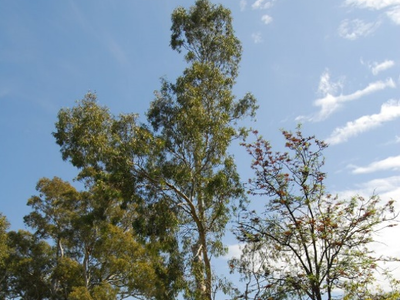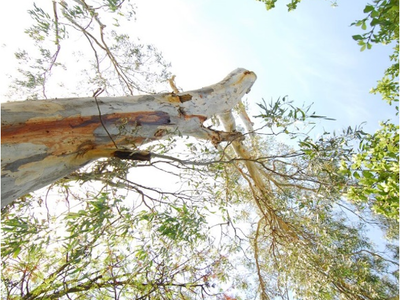Important news for prosecuting Tree-Damaging Activity
The regulated tree legislation has always been a complex area for councils to manage and enforce. Many of those complexities were recently argued in a Supreme Court appeal in The City of Unley v Crichton & Anor [2021] SASC 17.
This case involved a prosecution against an arborist and two adjoining owners who engaged the arborist to prune two Regulated Trees, which the Council claimed was the unapproved undertaking of development, in the nature of a Tree-Damaging Activity (TDA).
The ERD Court acquitted the defendants and was not satisfied beyond reasonable doubt that a TDA had occurred. Specifically, the Court accepted evidence from the arborist who did the pruning that the majority of matter removed from the trees was mistletoe and not live leaf matter.
Whilst the Council’s appeal against the acquittals was dismissed, the Court has provided helpful assistance into how to interpret the regulated tree legislation.
Illustrative before and after pictures of the subject trees in this case.
Why the decision is important
This is an important decision for two reasons:
- The Court found that a person who undertakes TDA without approval and wants to rely on the defence of pruning no more than 30% of the crown, bears the onus of proving it.
- The Court gave clarity as to the meaning of the “crown” of a tree.
Exclusions to the Definition of TDA
A TDA is defined to mean:
(a) the killing or destruction of a tree; or
(b) the removal of a tree; or
(c) the severing of branches, limbs, stems or trunk of a tree; or
(d) the ringbarking, topping or lopping of a tree; or
(e) any other substantial damage to a tree,
and includes any other act or activity that causes any of the foregoing to occur but does not include maintenance pruning that is not likely to affect adversely the general health and appearance of a tree or that is excluded by regulation from the ambit of this definition;
The regulations also provide a separate exclusion which the defendants relied upon as follows:
(6) For the purposes of the definition of Tree-Damaging Activity in section 3(1) of the Act, pruning—
(a) that does not remove more than 30% of the crown of the tree; and
(b) that is required to remove—
(i) dead or diseased wood; or
(ii) branches that pose a material risk to a building; or
(iii) branches to a tree that is located in an area frequently used by people and the branches pose a material risk to such people,
is excluded from the ambit of that definition.
On the face of it, there are possibly two different types of exempt pruning, that underlined in the definition of the Act above which relates to the health and appearance of the tree, and that excluded by the regulations, which relates to matters of safety.
The crown of the tree
On the Council’s case, based on its expert arborist’s assessment 95-99% of the crown of one of the trees had been removed and 45-65% of the other and that the trees appeared healthy prior to the pruning.
The evidence presented by the defence at trial however was that the trees were infested with mistletoe. Mistletoe is parasitic material that mimics the host leaf and becomes attached to the tree. The defence successfully argued that this material was not to be considered part of the crown of the trees and that all of the live leaf matter removed from the trees [i.e. not mistletoe] was less than 30% of the crown such that it was lawfully able to be pruned.
The Court decided that the crown of a tree does not include dead wood or mistletoe that is growing on a tree. The crown does, however, include the diseased wood that is required to be removed in order to appropriately deal with the mistletoe. The Judge said:
“There is no good reason to treat dead branches as part of the crown of a living tree.
On my preferred construction, unlimited dead wood can be removed without engaging the requirement in paragraph (a). Having said that, any such pruning exercise still would have to satisfy the 30 per cent requirement. But if only dead wood were to be removed the requirement, ipso facto would be satisfied.
As far as parasitical material, in this case mistletoe, is concerned, the second respondent was entitled to remove all or as much as it chose without it being treated as part of the crowns… The removal of mistletoe might only be possible by the removal of the branches of the host tree to which the mistletoe is attached. If any of those branches are still alive, albeit diseased because of the parasitical mistletoe, those branches will have to be taken into account for the purpose of satisfying paragraph (a). If it were to be the case that more than 30 per cent of the crown would have to be removed, even though consisting of diseased and dying branches, in order to remove the mistletoe and, ultimately, save the tree, development approval will need to be obtained.”
Onus of proof
The important outcome for councils in this case was the Supreme Court’s determination that the person who undertakes the TDA must prove that it was not unlawful by establishing, on the balance of probabilities, one of the exceptions.
This reversed the finding of the ERD Court at first instance which held that it was for the prosecution to prove beyond reasonable doubt that one of the above exceptions did not apply.
In our experience, one of the most difficult aspects of tree prosecutions is the evidentiary burden due to only discovering that TDA has taken place after the fact. At that stage it is very difficult to gather evidence about the state of the trees before the activity was undertaken. This was one of the factors the Supreme Court took into account in deciding it was for the defendants to prove that they fell within an exclusion.
For more specific information on any of the material contained in this article please contact Aden Miegel on +61 8 8217 1342 or amiegel@normans.com.au




